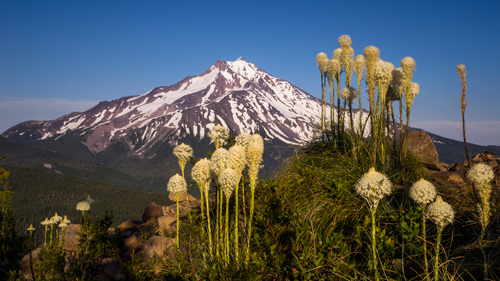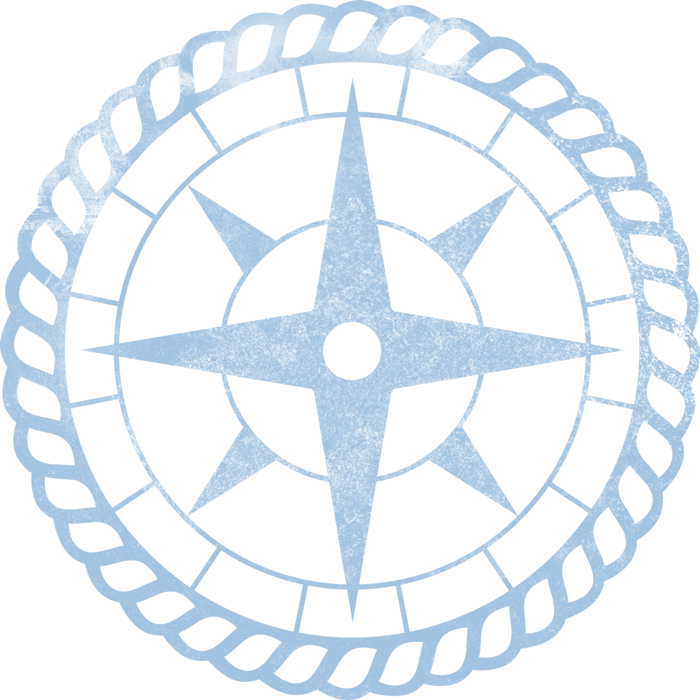Since Outward Bound’s inception, millions of students have experienced our wilderness programs. As you can imagine, throughout these 75 years we have established quite a few traditions, skills, quirks and pins on the map. To help prospective students gain a better understanding of Outward Bound and to give our alumni something to reminisce upon, we have created a guide that encompasses all things Outward Bound; from the skills, to the history, to the silly rituals, this is Outward Bound from A to Z.
A: Alpine Start
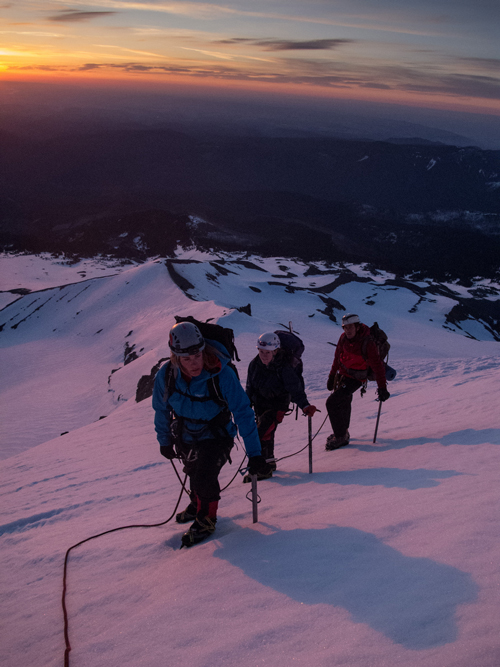
Photo by Dave Moskowitz
To make an efficient start on a long climb by packing all your gear the previous evening and starting early in the morning, usually well before sunrise. Alpine starts are common on Outward Bound expeditions during summit attempts and long paddle days.
B: Blue Peter
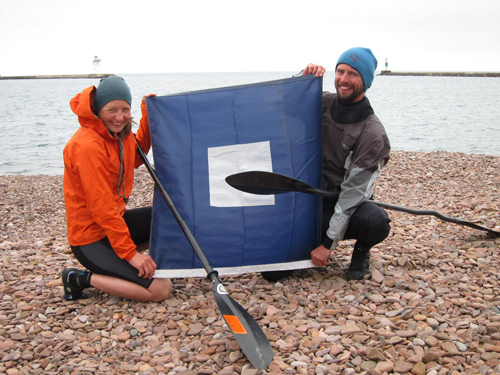
Outward Bound Instructor Course students hold up the Blue Peter flag- the symbol for Outward Bound.
The Blue Peter nautical flag indicates that a vessel is “outward bound.” Outward Bound schools use and raise this flag at the start of an expedition to symbolize that the journey has begun.
C: Compassion
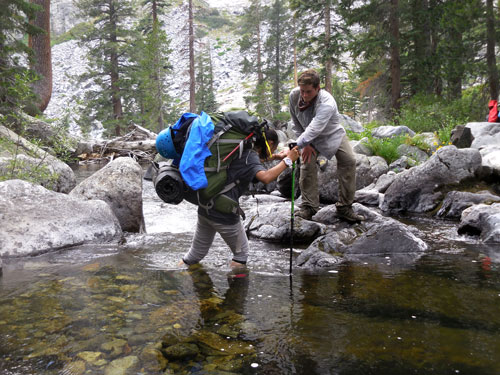
Students demonstrate compassion while crossing a river on a Yosemite Alpine Backpacking expedition.
A core value taught on every Outward Bound course, compassion is about demonstrating concern and acting with a spirit of respect and generosity in service to others.
D: Duffel Shuffle
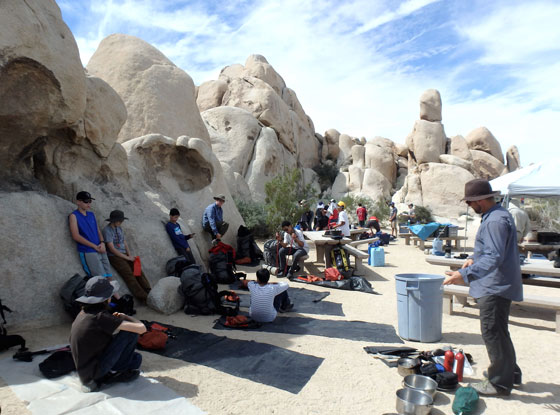
A crew sorts through their gear during duffel shuffle a backpacking expedition in Joshua Tree, California.
An activity at the beginning of every Outward Bound course. Instructors work individually with students to help them decide what should go into their expedition pack and what should stay at the base camp. Any luggage that stays behind will be secured in a locked, dry and safe location.
E: Eddy
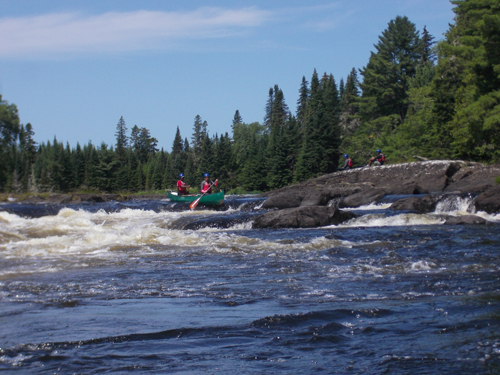
A river formation that occurs usually when water hits an object like rocks and creates a calm part of the river. Water sometimes does not move in these areas, or at times flow upstream. During Outward Bound canoeing and kayaking courses, students learn how to navigate and manuver through eddies while learning the basics of whitewater paddling.
F: Final Expedition
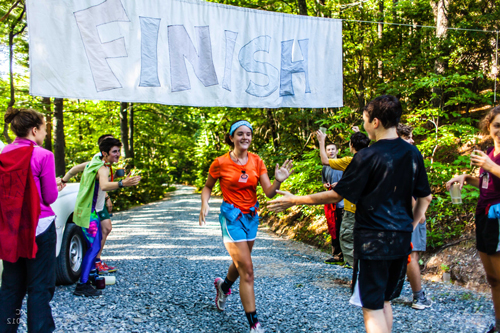
A student completes her final expedition in the Blue Ridge Mountains.
An activity that takes place at the end of most Outward Bound courses. The Final Expedition is a culmination of all the lessons and skills learned during an Outward Bound course. Each final expedition is tailored to fit the current conditions and participants on course, and gives the group autonomy and ownership of their course while the Instructors step back completely.
G: GORP
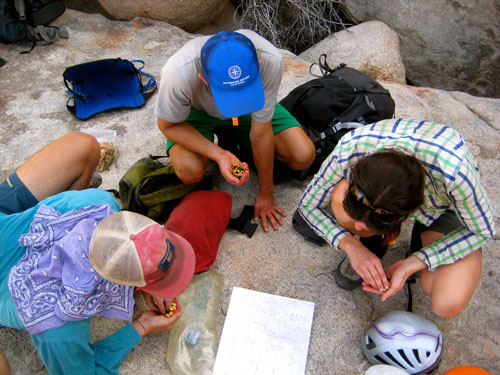
Students enjoy a handful of GORP while discussing their route. Photo by Rikki Dunn
Standing for Good Ol’ Raisins & Peanuts, GORP is the quintessential trail snack available on every Outward Bound expedition.
H: Headlamps
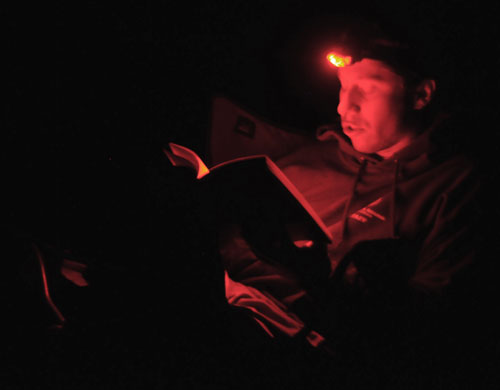
A student reads by the light of his headlamp on course with Outward Bound.
A piece of gear found on every Outward Bound student. Essential for lighting up an area in the dark, whether you are cooking dinner for your crew, waking up at 3:00am for an alpine start, or visiting the restroom in the middle of the night.
I: Integrity
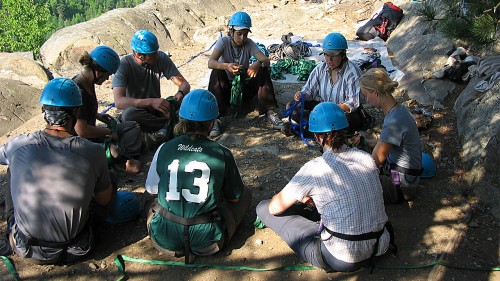
An Outward Bound Instructor hold a group discussion with students.
A core value taught on every Outward Bound course, integrity is about acting with honesty and being accountable for your decisions and actions.
J: J Stroke
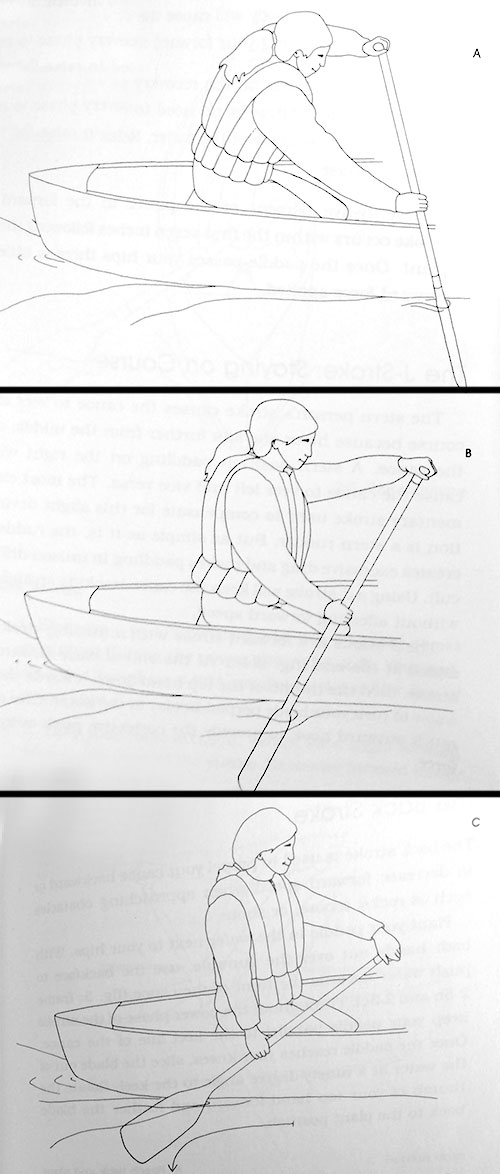
How to perform a proper J-Stroke
An essential stroke used for steering a canoe. This common stroke is taught to Outward Bound students on canoeing courses throughout the country; from the Boundary Waters of Minnesota, to the Florida Everglades, to the San Juan Islands.
K: Kurt Hahn

Outward Bound founder and educator Kurt Hahn
The founder of Outward Bound. In 1941, German educator Kurt Hahn founded Outward Bound with the goal to integrate intensive experience and skill-building into the fabric of education. His philosophies are considered internationally influential and his approach to teaching and learning was centered on the belief that education should place equal emphasis on development of character and the intellect.
L: Leave No Trace
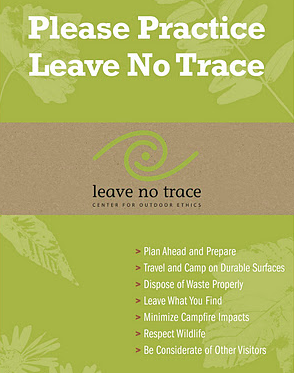
The 7 Leave No Trace Principles
A set of outdoor ethics promoting conservation in the outdoors practiced and taught on every Outward Bound course.
M: Morning Dip
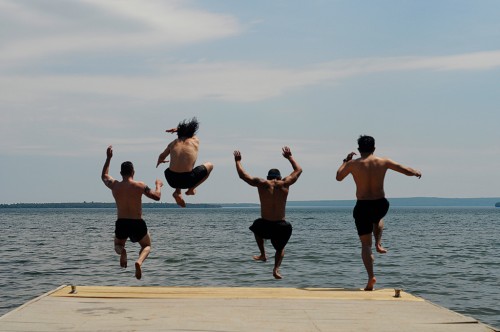
A group of veterans jump into the Boundary Waters for a morning dip on course with Outward Bound.
A tradition on Outward Bound sailing courses that involves jumping into the water as a refreshing way to start the day. Often followed by a warm breakfast and hot coffee or tea.
N: Navigator
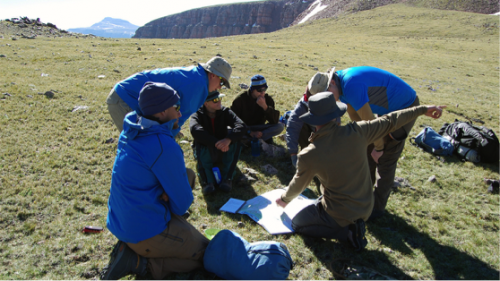
A group of students learn to navigate through the Colorado Rockies while on course with Outward Bound. Photo by Lauren Kent.
A person who directs a route or course by using instruments and maps. On an Outward Bound course, navigators are assigned daily to lead the group in that day’s expedition; whether it be by way of trails, waterways or canyons.
O: On Belay
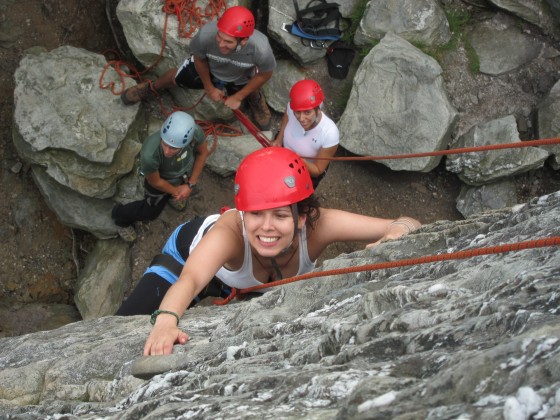
A student tries her hand at climbing on an Outward Bound course.
A climbing command given by the belayer that signals to the climber that he/she is safe to begin climbing. This command is taught and used on every Outward Bound rock climbing course.
P: Portage
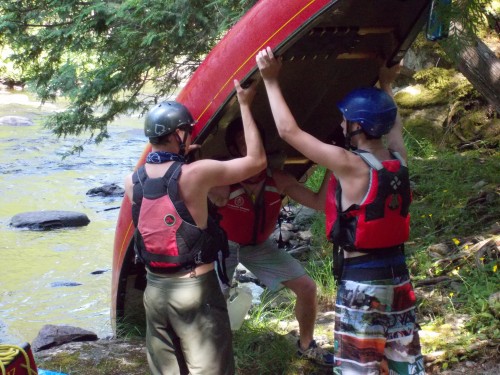
Students communicate and work together while portaging a canoe on course with Outward Bound
The practice of carrying water craft or cargo over land, either around an obstacle in a river, or between two bodies of water. On Outward Bound canoeing courses, students test themselves as they portage canoes over miles of trail.
Q: Quito, Ecuador
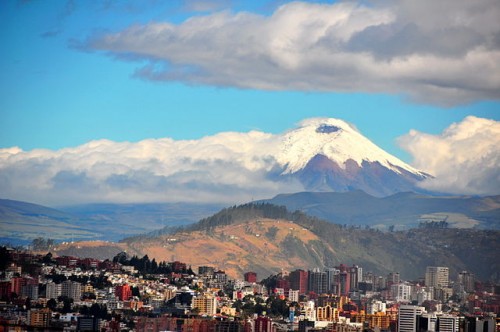
Stay in the city of Quito, Ecuador after your Outward Bound expedition comes to an end. Photo by Rinaldo Wurglitsch.
The capital of Ecuador, located high in the Andean foothills at an altitude of 2,850m. Students on the Colorado Rockies to Ecuador Leadership Semester have the opportunity to spend time in this historical city learning a new culture, interacting with locals, and broadening their world views.
R: Readings Book
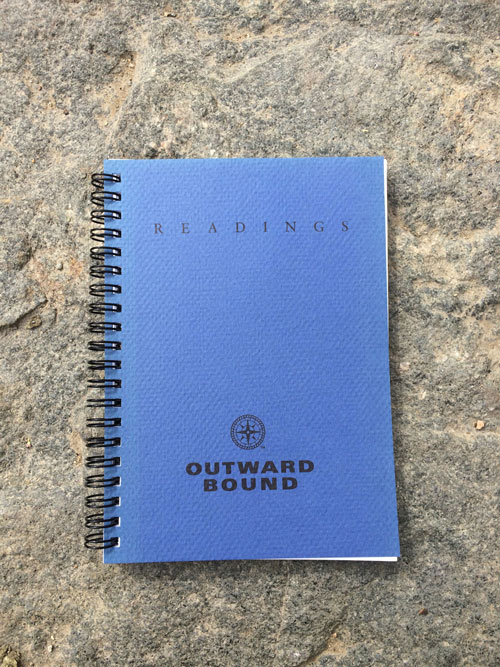
The Outward Bound Readings Book
A book of quotations that has been compiled over the years by Instructors and Outward Bound staff. Used to inspire, humor, and lend a moment of peace while on course with Outward Bound. These readings help us reflect upon our courses and our lives, and bring us special moments of insight.
S: Solo
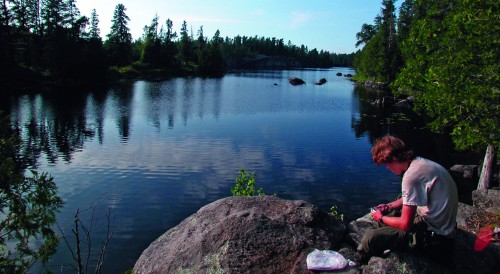
A student reflects during solo.
A period of time near the end of an Outward Bound course in which each student is assigned a secluded campsite within a designated area. It is a unique opportunity to spend time alone, reflect on the expedition, and plan for the future. Students are given all of the necessary gear, food, water and skills to complete this portion of the course.
T: Tyrolean Traverse
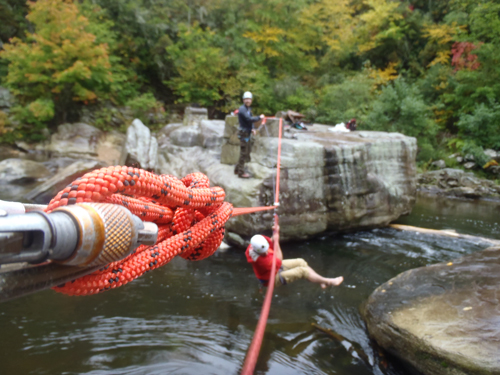
Students cross a river during an Instructor Development course
A Tyrolean traverse is a method of crossing through free space between two high points on a rope. This skill is learned and used on Outward Bound courses as a way to cross rivers, canyons and ravines.
U: Ursa Major
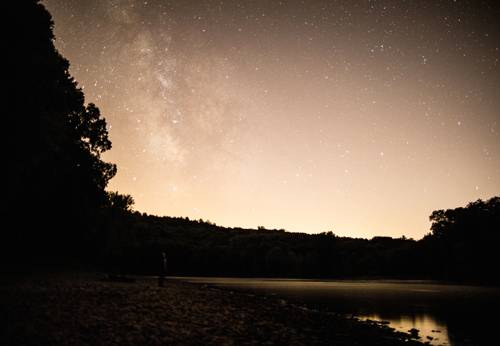
Photo by Ryan Harris
The third largest constellation in the sky, visible throughout the year in most of the northern hemisphere. The constellation’s most known for the group of stars that comprise the Big Dipper. Ursa Major can be viewed away from the city lights on many Outward Bound courses throughout the United States.
V: Vedauwoo, Wyoming
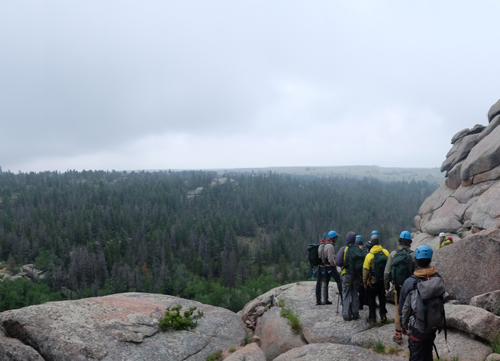
Students climbing in Vedauwoo on course with Outward Bound.
Pronounced “vee-dah-voo”, this surreal land known for its rock climbing features phenomenal formations of granite nestled into the aspen and pine forests of Wyoming’s Medicine Bow National Forest. Outward Bound offers rock climbing courses for climbers of all skill levels to explore the expansive spectrum of beginner to advanced crack and face climbing found in the area.
W: Wet Exit
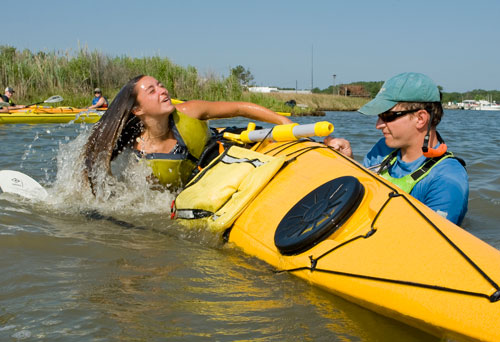
A student practices a wet exit in the Chesapeake Bay on course with Outward Bound. Photo by Jay Fleming
A wet exit is a skill taught on all Outward Bound kayaking courses. The skill involves safely exiting a kayak that has capsized underwater.
X: Xerophyllum Tenax
Xerophyllum tenax is a North American species of plants in the corn lily family. It is known by several common names, including bear grass, squaw grass, soap grass, quip-quip, and Indian basket grass. The plant is found mostly in western North America in subalpine meadows and coastal mountains. It is commonly found on Outward Bound expeditions in the North and Central Cascades, Sierra Nevada and Rocky Mountains.
Y: Yampa River
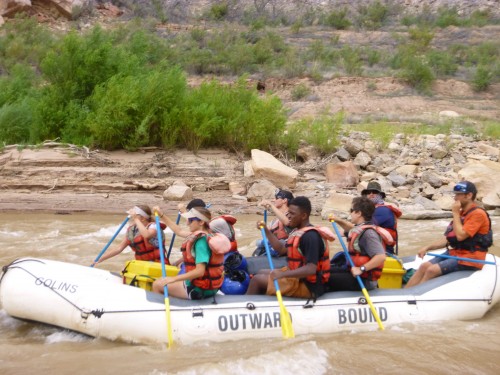
A group of students rafts down the Yampa River on a Southwest Rafting expedition. Photo by Katie Gregory
A truly wild river that runs free without dams, highways, railroads, or other manmade creations for its entire length. Outward Bound students get the opportunity to paddle through deep sandstone gorges and class II-IV rapids on the Yampa River during Southwest Rafting expeditions.
Z: Zepplin Bend
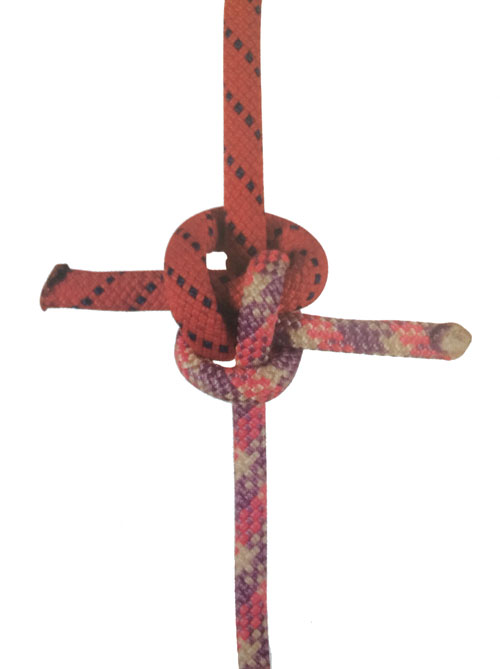
A proper zeppelin bend knot.
A Zeppelin Bend is a secure knot for joining two lines together that can be loaded before it is tightened. The zeppelin bend is commonly used on sailing expeditions to help anchor a boat.
There you have it, Outward Bound from A to Z. Ready to get on course and explore the wild and wonderful places you’ll go on a summer expedition with Outward Bound? Visit: www.outwardbound.org/
Have an Outward Bound skill, tradition, or memory you’d like to add to the list? Leave it in the comments below!



